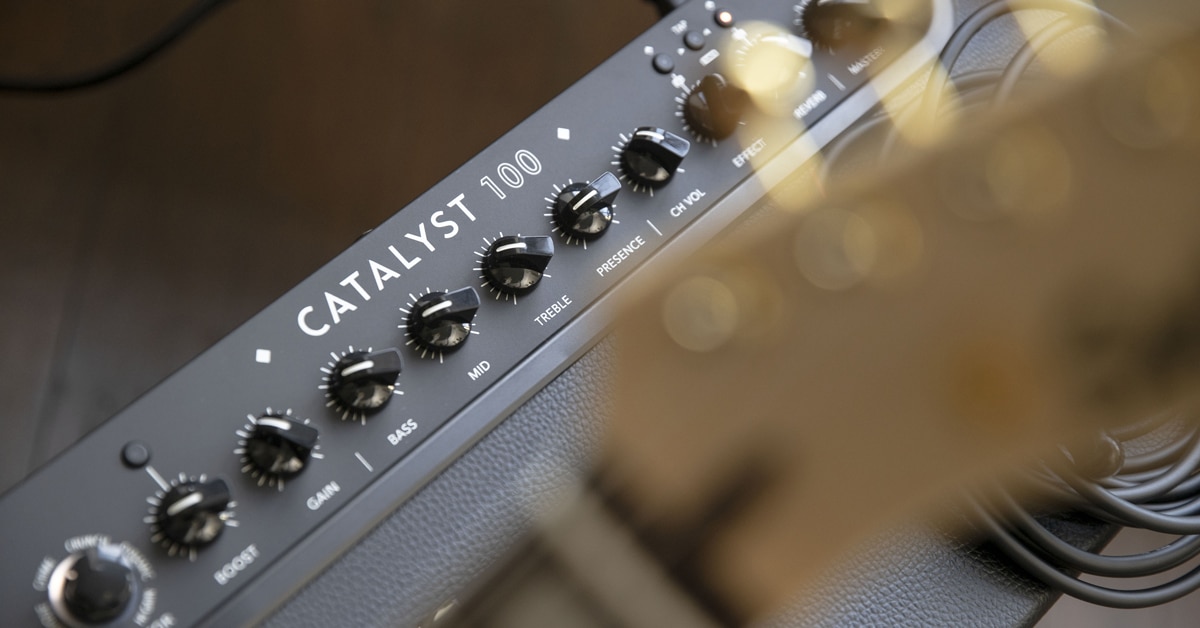For players who want the versatility of great digital modeling but the simplicity of a more traditional amp design, the Line 6 Catalyst series has been a revelation. With a half-dozen musically resonant, original amp designs that touch on every style and a great assortment of delays, reverbs and other select effects, along with some of the usual Line 6 special sauce, we’ve found the Catalyst to hit that sweet spot for pickers who glide from stage to studio on a regular basis. Line 6 Senior Product Manager Rick Gagliano, who has spent time at Guild/Córdoba, Hohner and other industry heavyweights, as well as on stage playing serious shred, took some time to sit down and chat with us about how and why the Catalyst was developed, and why it may well be an amp you need in your arsenal.
The HUB: Would you take us back to your earliest planning meetings about Catalyst—who was the player you envisioned plugging in?
Rick Gagliano: When we first kind of started to spitball the idea that eventually blossomed into Catalyst, we talked about creating an amp for someone who was looking for inspiring tones that were quick to dial in, with enough effects to make the playing experience thoroughly enjoyable. But we also wanted to make sure there wasn’t so much additional ability on the amp that they would get paralyzed from the options. "Is this too much? Is it not enough?"—make sure it’s just right, so that people plug in, play and enjoy it, without having to think about it too much. Of course, we also wanted to make sure we provided the options that modern players are going to be expecting.
The HUB: As you’re thinking about that, how did you settle on features—"must-haves," "nice-to-have," and such?
RG: As I said, the ethos was, "It’s got to be easy. It’s got to be simple." The next layer was, "What are the most useful types of guitar amp tones?" Pulling from the sound design team’s experience, we had to figure out how many sounds would be needed to cover the widest range of possibilities, both from a genre perspective and a sonic perspective.
From there, we started to think about the most likely scenarios for which the amps would be used. So, we talked about stage use, and how you’d need to be louder than the drummer. There’s also a likelihood that this player, especially considering the challenges of the past couple of years, may not be on stage. They may be sitting in their bedroom, either practicing or recording on a computer—something like that. We said if that’s the environment these players are in, what are the things that are going to matter to them? That thought led to the inclusion of the output power selector on the back. It also led to having a USB audio interface built in, and the direct output, which was originally geared for live performance, that could be used for recording, as well.
At each level of possible use cases, we would say, "Okay, if we use it this way what are the things we need to have? What are the baseline expectations, and are there any additional features that would be beneficial?" That’s how the editor app came up, which gives that great balance of deep control if a player wants that, while maintaining straightforward operation of the amp itself.
The HUB: As you were sorting out these use cases and features, did you find there was really a significant difference from studio to stage?
RG: I think the distinction between those two camps is getting narrower every day, and, especially the past couple years with COVID, that tended to remove us from what a traditional gigging arrangement has been.
Players continue to find new and unique ways to get their sounds out there. So, when we began the development, we were thinking about the two camps. As it moved along, what we saw was a slow convergence of a lot of the features that would be suitable for both situations.
The HUB: Gigging the past few years, for some people, might have meant doing a livestream on Twitch or Instagram, or some other platform, right?
RG: Absolutely. It’s funny, because for years, gigging meant being on a stage in front of an audience, but not anymore. There are all these other ways that music is being shared, and we wanted to make sure that we could provide a platform that allowed for any and all of those.
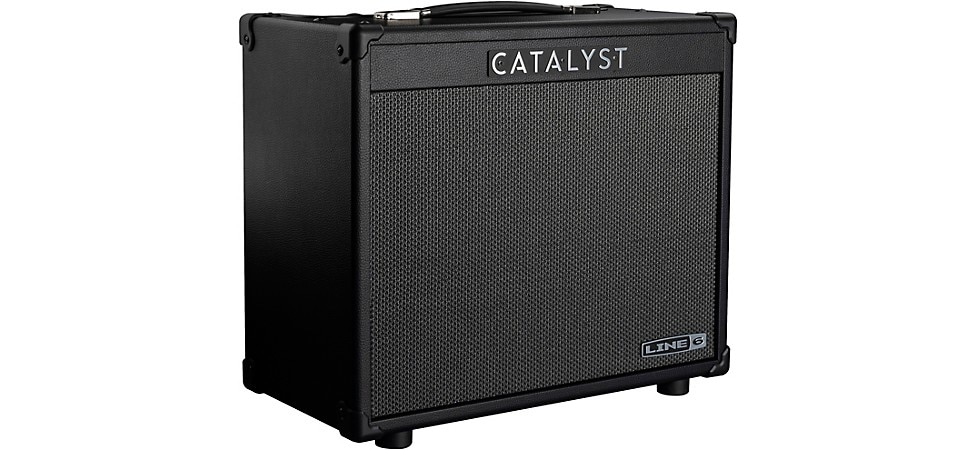
The HUB: Let’s dig into the original amp designs. They’re built on HX technology, which has a large library of existing models. What made you go for totally new designs, rather than pulling models of some classics "off the shelf?"
RG: There was a lot of spirited conversation that took place internally, because as you mentioned, Line 6 has this vast library of amazing sounds with the HX family of products. One of the things that kept coming up was that, because of the way our products are presented to the market, there are components that are going to change the way you hear it. For example, if I have a model of a well-known tube amplifier, and I plug it into a specific guitar cabinet which may or may not have anything to do with that original design, or I plug into an FRFR (Full-Range, Flat-Response) cabinet with a sealed back, the model is going to breathe and respond differently. So, as we were thinking about that, we said, "What if we designed amps with familiar tonal centers but we design them so that they would sound great in this particular cabinet design?" We started talking about what size the cabinet had to be, how it was going to respond, the bass frequencies, etc. Then, we settled on a particular speaker, and started to test it through those phases, and what we found was that, with these original amp designs, what the sound design team was doing was taking these familiar base lines and saying, "Yeah, let’s do these other things that we can’t do in the natural world, but make sure there’s always a reference point that comes back to whether it sounds good. Does it sound usable? Is this going to be a desirable experience for someone who plugs into the sound?"
The HUB: Looking at the layout of the amp, was there ever any consideration of simply numbering or lettering the six spots, so people could load in their preferred models? In other words, if they are into metal sounds, maybe just give them space to load in six higher gain amps?
RG: We went several rounds about that as a matter of fact. We definitely considered it, but we thought that for a first-time experience in a music store, for example, or the first time someone plugs into it at home, giving them a visual clue of what types of sounds were going to be included was very important—hence the name categories we used.
Having said that, I will say that, if you’re a metal guitarist and you want to just have a bunch of amps, we have six banks of presets on the two channels. You could certainly just load all twelve of your presets with various high-gain settings that have subtle, or maybe not so subtle, tone and effects adjustments, and have your particular palette. Then you could just ignore the names on the top panel.
The HUB: What does the HX engine allow you to do that maybe you wouldn’t have been able to do with other platforms? What’s exciting to you about it?
RG: Without giving away any trade secrets, the HX audio engine really ensures kind of pristine audio and best-in-class sound quality. It allows the team to capture functionality, down to the component level, of any product on the market.
Something that really jumps out, to which I just alluded, is that HX has given us the ability to do things that are not really possible in the "real amp" world. For example, it’s not uncommon for tube amps to have some number—whether it’s two, three, five or whatever—of preamp tubes that provide a certain tonal signature for that particular amp. One of the things the team did was say, "Well, what if we weren’t stuck with five tubes?" Because, if you designed in more than that, it might be cost prohibitive, or it might be a physical challenge, right? So, they said, "Here in the digital world, what if we add 20 or 50 or 100 preamp tubes, with varying stages of cascading gain?" Those are things that just can’t happen in the physical world, but in this digital world of HX design, they can.
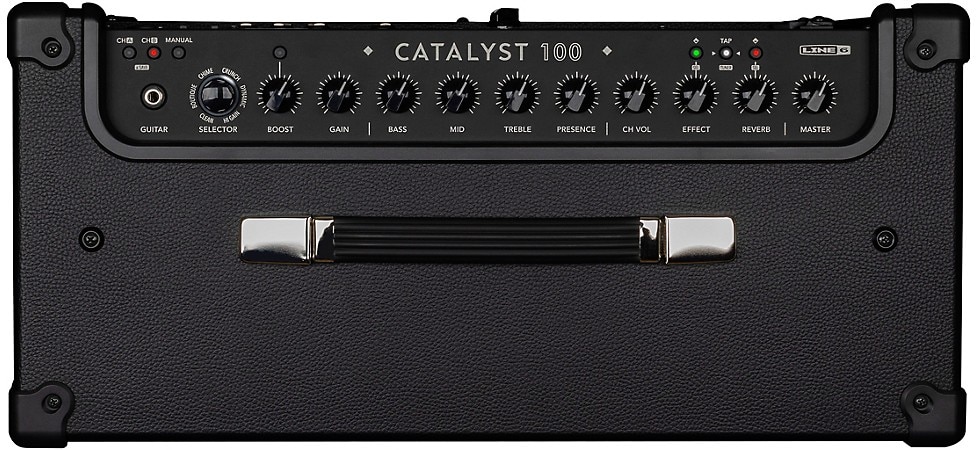
The HUB: As you mentioned, one of the stages of design for a modeling amp is the speaker, because it has to do a lot of things. What do you think makes a good speaker in a modeling amp?
RG: That was something we really agonized over. The speaker in a modeling amp has to be transparent enough to allow your modeling amp designs to sit nicely on top and have different characters, but we also wanted it to have a specific characteristic to the response versus something like a full-range flat-response speaker. We wanted it to have kind of an overall frequency response and breathability that you’d get from a guitar cabinet.
We did pretty extensive testing for speakers in the Catalyst. All in all, I believe we compared 25 or more different speakers to see what we liked and didn’t like, and we took notes on that—both physical notes as well as recording captures. In the end, we were really happy with the custom-designed speaker we decided on. We think it lets our existing original amp designs fit really nicely while acting, feeling and responding like a traditional guitar amp.
The HUB: How did the process move along exactly? Did you get your amp models to a certain point, then get the speaker, and then tweak more? It seems like a pretty iterative process.
RG: Iterative is the right word. If I recall correctly, we used one of the original amp designs that we developed in the very early testing as we started to go through these speakers. As we were testing through different speakers and the variety of cabinets and woods, and things like that, we were also refining the original amp designs and trying to stay in the same ballpark. "Do we maybe need to tweak the EQ, or change something on the amp model? Or is this the right speaker?" I think the end result was kind of a final tweak on the amp designs after we settled on the cab, the speaker and the cab size, and how it was going to respond with the power section.
The HUB: Earlier in our conversation you touched on the original amp designs, each having a familiar tonal center. Can you give us a deeper dive into them?
RG: As we were designing the six unique amp voices on the Catalyst, we wanted to make sure there was a kind of auditory reference point. People have been hearing guitar on various stages, in various ways over the years. So, we made sure to keep some of those things in place as we were kind of designing them, and then we did some additional tweaking.
For the Clean amp, we listened to some of the most popular kinds of cleans—some solid state, some tube amps—and said, "What are the things that happen that are pleasing to the ear, and what are the things that are maybe not so pleasing?" We wanted a really sparkly, pristine clean that didn’t have any real coloration, even as you turn the amp all the way up.
For the Boutique setting, we looked at some of those very expensive high-end amps you find in some of the L.A. studios, and are owned by some of the most famous players—amps that are almost unobtainable. So, we said, "Let’s start there, and see how we can provide that type of an experience to the masses." And, of course, we incorporated some of those things that only happen in the digital world, as we mentioned earlier.
On our Chime setting, we looked at some of the most popular EL84-driven amps over the years, and added some grit and crunch to the higher-gain settings that aren’t common in that type of amp.
On the Crunch voice, we looked at the best British-inspired amplifiers from a number of sources, and then sprinkled some digital magic into the preamp section there.
The Dynamic amp is, interestingly enough, a modded version of an existing Line 6 original creation—the Cartographer amp. This may be familiar to some of the Helix and HX users. We made that one ultra touch-responsive.
Finally, the Hi Gain amp—the idea there was to get a tight, modern high-gain sound that kept its low end tight and together, no matter what volume you were at.
So, we settled on these six original amp designs. Some were inspired by some familiar territory, but then tweaked to the nth degree to make these really usable sounds across a wide variety of genres.
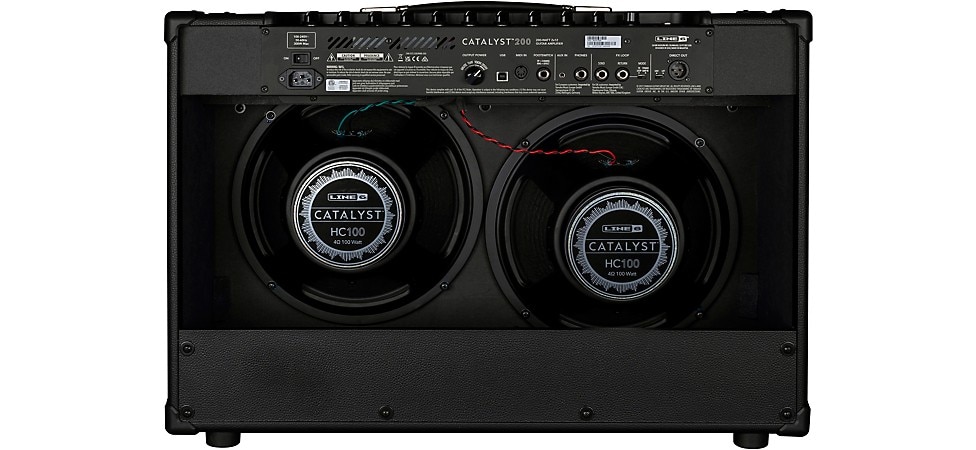
The HUB: As you move from the amp section into the effects, you’ve got, correct me if I’m wrong, six reverbs and then across modulation, delay and pitch, there’s 18 effects. Is that right?
RG: That’s right. The thing with our effects was how to decide which ones to include. We went through our HX and legacy effects library because, obviously, we have modeled a vast array of effects over the years and needed to decide from there what to include. We didn’t want to overload the effects capabilities, since we have other products that would appeal to the player that wants every effects pedal under the sun. We also had to consider the limitations of the user interface, so we didn’t want to have 30 extra knobs for all the parameters that some of these effects have. What we ultimately wound up with was a good selection of the best delays, mods, pitch effects and reverbs, mostly from our HX library and some from our legacy libraries.
The HUB: What’s your go-to?
RG: Oh, man. I like a bunch of them. My go-to reverb is called Plateau. Along with the reverb, it’s got a couple of pitch filters for some of the early reflections. So, when you hit it, if you’re doing soundscape sort of stuff, it adds this really rich, harmonic dimension, and I really like that. I’m also a fan of the Transistor Tape Delay, because it is so appropriate sounding to what I used back in my earliest days of recording. For modulation, I really like the Ubiquitous Vibe. It does what you expect it to do, if you’re familiar with that type of an effect.
The HUB: It's interesting you brought up Ubiquitous Vibe. That’s obviously based on the original pedal, but so many of these classic effects, like Ubiquitous Vibe, have been cloned or simply inspired other pedals, that end up going in slightly different directions. Are your golden units the originals in each case?
RG: I think it really depends on the effect. In many cases, you know, we have original products that we use to model. And the sound design team has built this really incredible library of possibilities, based on not just original platforms or "golden units," but also some of those, "inspired by" units that have come out. The guitar effects category has really kind of exploded over the last five to 10 years where so many products have their own little secret sauce or spin on an original inspired design. So, I think you’ll see some of those in the broader sense in the Line 6 world. You’ll see some of those in other products. For the products that we used as the baseline for Catalyst, they’re directly out of our legacy library, so in most cases they’re referencing the original design.
The HUB: To that end, would you say most of these effects coming out of your library, are they modded at all from what people would have experienced on other products?
RG: Almost everything is directly off the shelf. However, they have been custom curated specifically for Catalyst, with some minor tweaks to the performance out of the box. So, all the delays are directly out of our HX library. That’s the Simple Delay, Vintage Delay, Digital Delay, the Transistor Delay, the Adriatic Delay, the Duck Delay and the Staggered Delay. Anybody familiar with our HX or Helix products will recognize those.
Similarly, with the modulation effects, whether it’s Plastic Chorus or a Script Mode Phase, etc., they’re all again directly out of the HX library. For the pitch filter effects, we have a couple that go back to earlier products—I believe M-Series era—like the Octavers. There’s an effect called the Growler, which is from our legacy library, and then a couple, like the Octavia and the Simple Pitch, are out of the HX library. All the reverbs come directly out of HX as well.
And, by the way, the tweakability factor for all those effects is visible in the app, but from the UI itself—from the control panel—basically you can select any of those effects, the effect level, and you can also affect whether it’s pre- or post-amp setting.
The HUB: You mentioned the Transistor delay. What level of control is the user going to get when they pull up the app? How many knobs would be there?
RG: If you bring up the Transistor Tape Delay in the app, you’ve got note sync. You’ve got the amount of feedback, basically the number of repeats. You’ve got the overall effect level. You’ve got Wow and Flutter. And you’ve got headroom, not unlike what you would see on a transistor delay.
If you bring up, for example, the Gray Flanger, you’ve got again note sync. You’ve got the width of the flange. You’ve got the regeneration, the headroom, the level and the manual control, which is something that’s exclusive to that.
Within the editor, you’ve got a fair amount of stuff that you can get to, for sure.
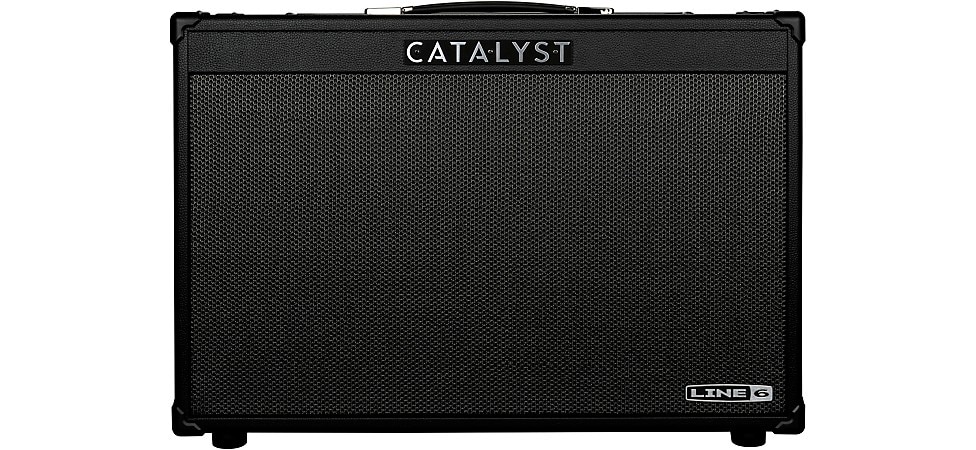
The HUB: One thing we didn’t touch on yet was the output power control. How does that behave differently than master volume might?
RG: That was a feature we spent a lot of energy on. One of the things that is different than just turning the master volume down is that at each of the four settings we’ve digitally adjusted within the amp the “feel” and overall fullness you know. Typically, as you lower or raise volume, the way your ear hears bass frequencies, for example, will change. So, we’ve adjusted for that within those settings. The settings, by the way, are the same for all of the three amp models in the lineup. You’ve got a full power, you’ve got a half-power setting, and there’s a half-watt setting, which is really interesting for really quiet bedroom rehearsal, or for apartment dwellers—things like that. There’s also a mute switch for recording, or just playing back through headphones.
The HUB: Before we get to our last question, I wanted to touch on the MIDI implementation a bit. Can you break that down for us a little?
RG: Yeah, so in the MIDI implementation we were careful, as is common throughout a lot of the development for Catalyst, not to overload players with too many things. So, you can use a simple MIDI controller to access your 12 presets, for example, with program changes. But there’s a pretty extensive MIDI menu with most of the parameters—everything from amp voicings to effects levels to some of those effects parameters we’ve talked about. You can also control tap tempo, and even less obvious stuff, like cab and mic select for the direct out. All of those things are assignable through MIDI switching or continuous control.
The HUB: Okay, final question! What’s your personal favorite setting? What’s your go-to?
RG: Speaking specifically for myself, I’m really fond of the Dynamic amp model. It’s the fifth one on the selector, and it’s really responsive to touch. It’ll give you so many tonal possibilities just from changing your pick attack or the volume knob on your guitar. That, along with the Plateau reverb, which has some pitch effects in the early reflections, have allowed me to create some kind of cool, wonderful soundscapes and beds to build other songs on.
Now, those are my personal favorites, but I think every player that plugs into Catalyst is going to find something there for them.





































































































































